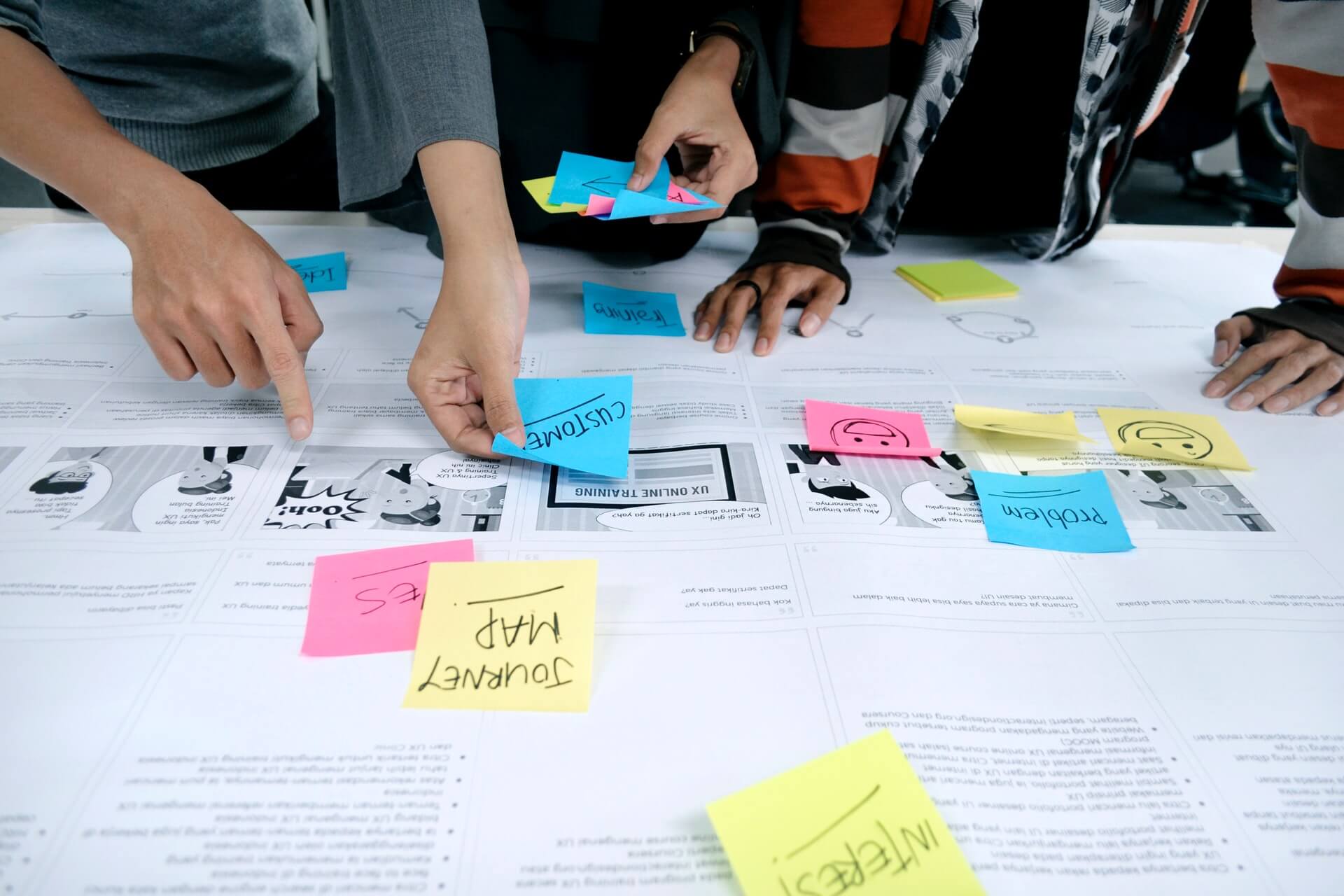Incorporating content marketing best practices in your digital strategy is great, but if that means churning out random blog posts and serving content that your customers don’t need, then you should know it’s probably not going to be effective.
Gone are the days when brands and businesses had all the power in terms of marketing and positioning themselves. Now, people are in charge, and if you don’t give them value, they’re not going to develop trust in you, nor will they even consider buying your product. That’s why context is so important in your messaging. It all boils down to understanding your audience and personalizing the content you put up.
As a matter of fact, about 89% of companies are competing on the basis of Customer Experience. So, creating a customer-centric strategy has never been more important.
If you’re thinking of doing this in your marketing, you don’t have to go to the ends of the earth to search how. Integrating the customer journey into the way you produce and deliver your content is one of the best ways to add context in your marketing.
What is the Customer Journey?
The customer journey is a non-linear process that breaks down how potential customers interact with your company, from the moment they realize they need a product or service until they eventually become your loyal users. There are four primary stages of the customer journey, but not every person will go through it from start to finish. Some may only go through two or three steps while still resulting in a successful transaction with your business.
- Awareness Stage – This is the stage when a customer realizes they have an issue or problem that needs to be solved. Let’s say they’re having trouble with their public transportation options and need a more efficient way to get around. They’ll probably look into options like bikes, motorcycles, or cars online.
- Consideration Stage – From here, they’ll be looking up features of the products they’re canvassing for. Several factors can come into play here: the price range of the products and their budget, the availability of the item, the model or make, reviews online, etc. Any information they get about the products will influence their decision towards a purchase. Keep in mind that this is usually the longest part of the journey.
- Decision Stage – Once they’re satisfied with all the information they’ve researched online, they’ll be more confident about purchasing with you. At this point, buyers usually have a good understanding of what they want, so they’ll be shortlisting brands with the best offerings.
- Retention Stage – After trying out your product or service themselves, the customer will form their opinions about it and see if it meets their expectations. They may reach out for support during this stage, so excellent customer service and after-sales care can help seal the deal that you’re the right choice. Keep doing this and you’ll have earned yourself loyal customers.
Content Marketing and the Customer Journey
Your initial impression of content may lead you to think about articles, brochures, email campaigns, or newsletters that are primarily focused on either awareness or promotional purposes. But the truth is, content can be effectively used throughout the customer journey.
Not only is content a powerful tool for reaching prospective clients, but it can also help keep the audience you’ve worked hard to build and have them stick around for years to come. The key here is to know what kind of content you should put out there according to the customer journey.
Each stage of the customer journey can help dictate the kind of content you should create. Conversely, your content should drive what happens in the customer journey. For this to work, you’ll need to map out your content strategy based on the unique way buyers interact with your brand.
Mapping Your Content Strategy to the Customer Journey
When it comes to the customer journey, finding and reaching your destination is a whole lot easier when guided by a map. The same goes for achieving your goals in content strategy. But before you dive into it, you first have to understand who your audience is, and this includes identifying their needs, wants, and pain points, as well as the questions they’d most likely ask themselves even before seeking the solutions you offer through your content. All of this ties back to effective customer journey management and digital customer journey mapping.
Customer journey mapping increases ROI from marketing activities by 54% on average. (Adobe)
To help you understand how to map out your content strategy according to the customer journey, let’s go through the types of content that work best.
1. Awareness Stage
The Awareness Stage is where people start to learn about your business or products, so it’s your job to generate interest. A loud and positive first impression should help convince them that what you offer is the answer to their queries.
Types of content:
- Blog posts that answer common customer challenges
- Social media explainer videos
- Infographics that answer the 5Ws and 1H
2. Consideration Stage
Customers in the Consideration Stage are well aware of their pain points and are actively searching for solutions. Here, you’ll have to provide content that gives them a reason to want more, allowing you to nurture them towards the Decision Stage.
Types of content:
- Email newsletters (that aren’t spammy)
- eBooks that demonstrate your expertise in your niche
- Case studies
3. Decision Stage
Scrutiny is high in the Decision Stage, since this is where the customer should be convinced to make the purchase decision and take you up on your offer, be it a product or a service. It will take a highly personalized approach to content so you can meet their needs.
Types of content:
- In-depth blog posts (like this one!)
- Customer testimonials
- Instructional videos
4. Retention Stage
Often overlooked, the Retention Stage is where you’ve landed a sale and earned a customer. You won’t need much convincing anymore, but instead, your focus should be geared towards providing enough continual value for them to want to return. This calls for a consistently valuable content experience.
Types of content:
- Community forums or help base (especially for tech products)
- User-generated content
- Surveys that ask how you can do better
Keep Them Coming Back for More
Now that you know how to add more context to your content, you can take steps to help your customers find the information they want exactly when they need it. This will speed up their decision-making process and help close more sales. As long as you keep your customers in mind, you should have no problem with the execution.
If you’re looking to beef up your content marketing strategy, Spiralytics, one of the best content marketing agencies in the Philippines, is just one message away. Contact us today to get a free quote and get your marketing ramped up a notch!





